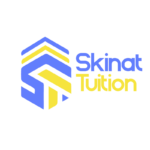Reading Time: < 1 minute
Table of Contents
ToggleForces and Motion
Introduction
Forces and motion describe how objects move and interact. These concepts are a cornerstone of GCSE Physics and are essential for understanding real-world mechanics.
This article will cover:
- Newton’s laws of motion.
- Speed, velocity, and acceleration.
- Practical applications of forces.
Newton’s Laws of Motion
- First Law: An object remains at rest or in uniform motion unless acted on by a force.
- Second Law:
 .
. - Third Law: Every action has an equal and opposite reaction.
Speed, Velocity, and Acceleration
Speed
- Distance travelled per unit of time.
- Formula:
 .
.
Acceleration
- Rate of change of velocity.
- Formula:
 .
.
Practical Applications of Forces
- Car Safety: Seat belts and crumple zones reduce force in collisions.
- Sports: Understanding motion improves performance in running, cycling, and throwing.
Conclusion
Mastering forces and motion provides a solid foundation for understanding mechanics and physics applications. Practise applying Newton’s laws and motion equations to real-life problems.
📅 Book Your Free Consultation Today!
Skinat Tuition | Achieve Academic Excellence with Expert Mathematics, Science, and English Tutoring.



